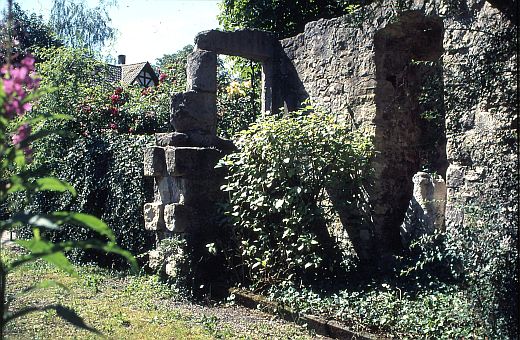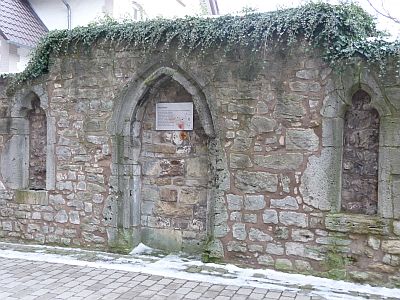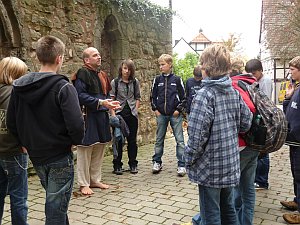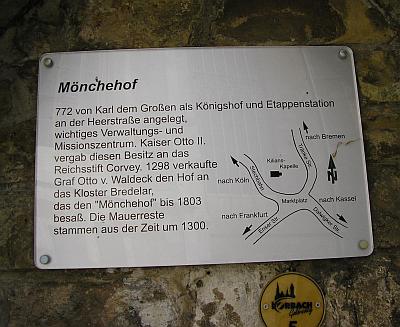StandortOstseite der Kilianskirche
Mönchehof

(Photo: Lother Gerlach)
The east side of the Kilianskirche is another historically important place. It is the oldest part of Korbach. Today, there is only a rest of the quarry stone wall with a gothic pointed arch conserved, on the left and right side flanked by narrow windows with shamrock-formed tops. Long time before Korbach was granted municipal law, a Frankish king´s court had been built here, from where later the town developed. Constructed after 772, it served Emperor Karl as military base during his wars of conquest.

Emperor Karl had it put up there due to its strategic position between two trade routes. The property was first documented in 980. At the time it belonged to the empire convent Corvey. Probably the rest of the gothic building also dates from that time. The "Königshof "later was sold to the monastery Bredelar, which owned it from 1298 to 1802. Since then it was called "Mönchehof".

The Waldeckische Geschichtsverein (history association of Waldeck) placed a commemorative plaque here for four men that had particularly made a merit of the local history of Korbach from the 18th to the 20th century (church- and school councillor Ludwig Varnhagen; high school headmaster Louis Curtze; consistorial councillor Carl Curtze; high school professor Albert Leiß).

(Photo: Birgit Emde)
© Jakob Gleumes/ M. Möller
Literatur:
Ein Rundgang durch die alte Stadt, bearb. von Ursula Wolkers, hrsg. vom Wilhelm Bing Verlag und Magistrat der Stadt Korbach mit Förderung der Sparkassenstiftung Waldeck-Frankenberg, Korbach 1999.
Marie-Luise Lindenlaub: Korbach steckt voller Geschichte(n). Reiseführer in die Vergangenheit einer Stadt, Korbach 2008.